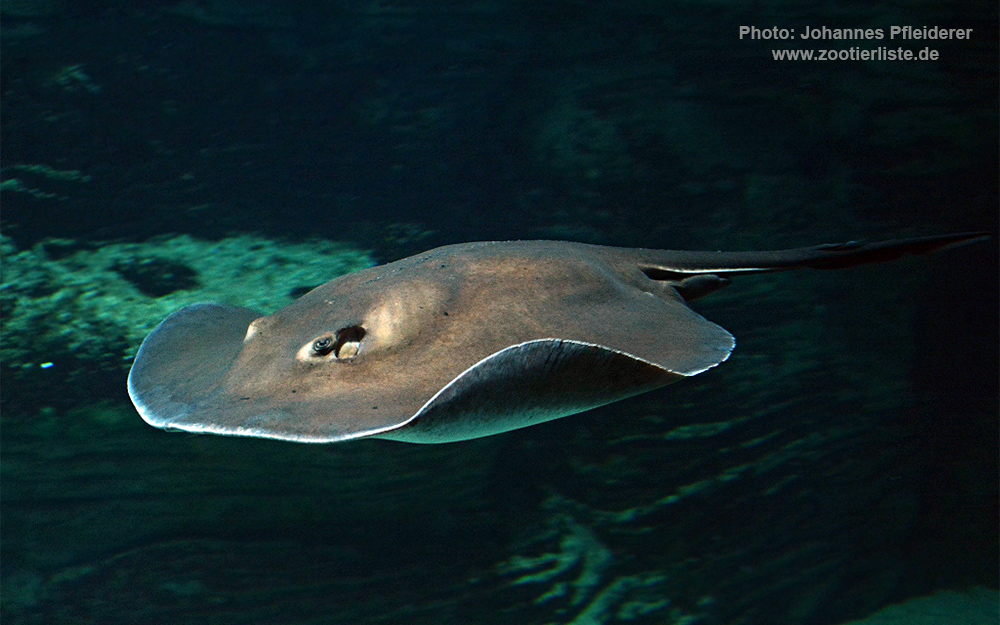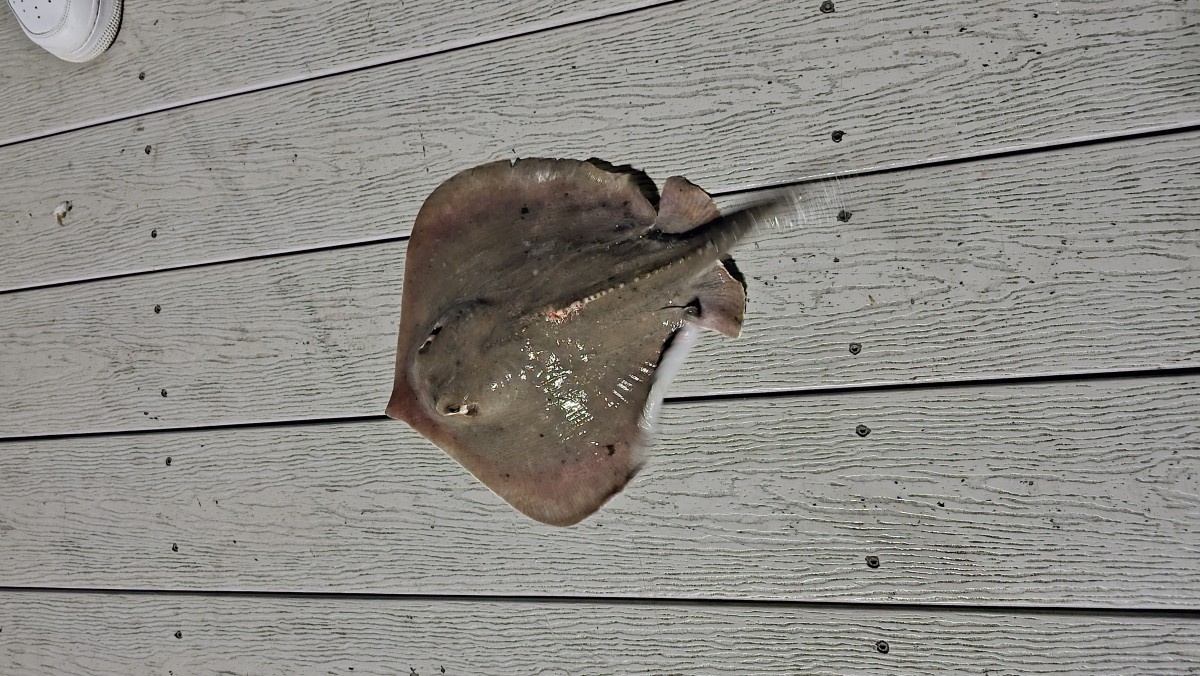Round fantail stingray
(Taeniurops grabatus)

Classification
General data
The round fantail stingray (Taeniurops grabatus) or round stingray, is a poorly known species of stingray in the family Dasyatidae. It inhabits sandy, muddy, or rocky coastal habitats in the eastern Atlantic Ocean and the southern Mediterranean Sea.
This dark-colored ray typically reaches a width of 1 m (3.3 ft), and can be identified by its nearly circular pectoral fin disk, short tail, and mostly bare skin. The round fantail stingray hunts for fishes and crustaceans on the sea floor, and exhibits an aplacental viviparous mode of reproduction. The International Union for Conservation of Nature (IUCN) does not yet have sufficient information to assess the conservation status of this species.
The round fantail stingray is found on the tropical to subtropical waters of the eastern Atlantic from Mauritania to Angola, as well as off the Canary Islands, Madeira, and Cape Verde. This species in the Mediterranean Sea is occasionally sighted and appears to be frequent in the Gulf of Gabes and in Levantine waters. However, it cannot be considered a Lessepsian migrants, as reports of this species being present in the Red Sea appear erroneous. Found at depths of 10–300 m (33–984 ft), the round fantail stingray favors coastal sandy, muddy, or rocky areas.
The round fantail stingray has a nearly circular pectoral fin disk slightly wider than long. The tail measures no longer than the disk length and bears one or more stinging spines on the upper surface.
The spines average 50 mm (2.0 in) long in males and 66 mm (2.6 in) in females, and have a central groove and 29–45 lateral serrations. Replacement spines grow in front of the primary spine. There is a deep fin fold running beneath the tail from the level of the spine almost to the tip.
The skin is mostly smooth, save for small dermal denticles found along the middle of the back from the spiracles to the tail spine, as well as three thorns on the shoulders. The coloration is dark gray to brown to olive above, with various darker mottling, and off-white below.
This species typically grows up to 1 m (3.3 ft) across and 1.5 m (4.9 ft) long, though it has been reported to a length of 2.5 m (8.2 ft). It can weigh as much as 150 kg (330 lb).












